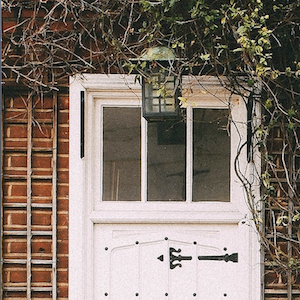The Ultimate Guide to Pavilions: History, Design, and Modern Uses
By Nia Mohammed
How odd, a building with no walls, and it’s not a ruin but a beautifully decorated structure. Imagine walking through a serene garden, the sunlight filtering through the trees, and in the distance, a beautiful structure catches your eye. It’s open-sided, allowing a gentle breeze to flow through, offering a perfect spot to pause and enjoy the surroundings. This is a pavilion, a term often used interchangeably with “summerhouse” and “temple.” Let’s delve into the The Ultimate Guide to Pavilions: History, Design, and Modern Uses.
Envision yourself marveling at the diverse designs of pavilions around the world, each one inviting you to step inside and experience its unique charm and purpose.
If you have ever visited China you may well known that here a pavilion, known as “ting,” have been an essential element of garden design for thousands of years. Picture an elegant structure with intricate wooden carvings and graceful rooflines. These pavilions were often part of larger garden complexes, serving as spaces for relaxation, meditation, and artistic pursuits like painting and poetry.
Imagine the beauty of a Persian garden, known for its symmetry and lush greenery. At the heart of these gardens often stood a pavilion, a place where royalty and nobility could rest and enjoy the carefully designed environment. It’s like the ultimate hangout spot, combining nature’s beauty with some seriously cool architecture!
In classical Greece and Rome, pavilions, known as “exedrae” or “pergolas,” were common in both public and private gardens.
The Renaissance in Europe brought a revival of classical ideas, including garden design. They built beautiful pavilions, which are like fancy little houses, in the big estates and gardens of nobles. It was a time when everyone wanted their gardens to look uncovered and amazing, and those pavilions became a special part of it all!
As we step into the 19th century, public parks and gardens started popping up all over Europe and America, and guess what? Pavilions became super popular as bandstands, tea houses, and cosy shelters for everyone to enjoy. Just picture families hanging out in these spaces on a sunny afternoon, laughing and having fun together while listening to music or sipping tea. It was all about enjoying the great outdoors and making special memories!
In contemporary architecture, pavilions continue to captivate with their versatility and aesthetic appeal.
Picture entering a world where architecture and nature come together in an extraordinary embrace. This is the experience of the Serpentine Pavilion 2024, designed by Minsuk Cho of Mass Studies.
As you enter, you’re greeted by an undulating structure that seems to breathe with the surrounding landscape. The pavilion invites you to explore its fluid spaces, where light and shadow dance through innovative materials and open design, creating a seamless blend of indoors and out. Each step within this captivating environment engages your senses, fostering a deep connection between art, architecture, and the natural world.
Step into Yasmeen Lari’s “Rising from the Water” pavilion, where every element invites you to experience a harmonious blend of tradition and the open.
As you walk through, you feel the gentle embrace of the outdoors and the thoughtful design that whispers tales of cultural heritage. The space, both humble and profound, encourages you to ponder the possibilities of a future where architecture coexists with the nature outside.
Estúdio Campana’s amazing pavilions in a park in São Paulo made with living plants! Imagine walking through the park and seeing these cool structures that look like they’ve been taken over by nature. It’s like stepping into a magical garden where plants grow on the walls and roofs of the pavilions. You can walk inside and feel like you’re in a secret hideout surrounded by green leaves and flowers.
California’s High-Speed Rail Station features a design that is strikingly open and modern, resembling a sleek pavilion that invites everyone in. With its airy and spacious layout, the station creates a welcoming atmosphere!
But why are pavilions created? Their purposes are as varied as their designs.
Pavilions provide shelter from the sun, rain, and wind, allowing people to enjoy the outdoors in comfort. This combination of protection and openness makes them ideal for various activities.
Often, pavilions are designed to enhance the beauty of their surroundings. They serve as focal points in gardens and parks, adding an element of architectural interest.
Throughout history, pavilions have been places for social gatherings, artistic pursuits, and cultural events. They provide a space for people to come together and enjoy leisure activities.
As you stroll through a garden or visit a public park, take a moment to appreciate the pavilions you encounter. These structures, with their rich history and diverse purposes, continue to connect us to nature, the openness, and each other in beautiful and meaningful ways.
If you enjoyed reading The Ultimate Guide to Pavilions: History, Design, and Modern Uses, why not try Modern Garden Design – Top Tips for Creating Your Very Own Outdoor Oasis
.Cent Magazine London, Be Inspired; Get Involved











